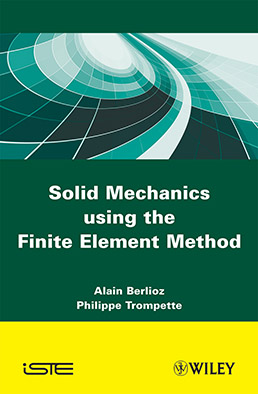
Today the fundamentals of solid mechanics may be explained by “numerical” experiments using the finite element method. The explanation is detailed in this book using many examples. After a short review of how the finite element method works (in Chapter 1), Chapter 2 develops some key points of solid mechanics: what is a beam? when and how can a structure be represented by beam elements? what are the basic hypotheses? what kind of information does a beam model provide? A generalized beam element is also presented.
Chapter 3 uses the same approach for the discussion on stress concentrations and stress singularities: local effects; influence of geometric discontinuities, such as holes or corners; mesh refinements and/or analytic-numeric approaches.
Chapter 4 is devoted to plate modeling: coupling of membrane and bending, folded, stiffened, composite plates.
Chapter 5 provides a short presentation of the dynamics of structures with a particular focus on the modal method, the influence of local defaults on the modal response is also analyzed.
Commercial software (Ansys®) is used to study the examples.
1. Fundamentals of the Finite Element Method.
2. Modeling Structures with Beam Elements.
3. Stress Concentrations, Stress Singularities.
4. Plates.
5. Dynamic using the FEM.
Appendix 1. Determination of Beam Section Properties.
Appendix 2. Computer Implementation of the SAA.
Alain Berlioz is a Professor at Toulouse University. He teaches solid mechanics courses (strength of materials, finite elements) in several engineering departments. His research activities are related to the stability of dynamic systems.
Philippe Trompette has been a Professor at several engineering schools in France (Lyon and Grenoble Universities). He has developed applications for the finite element method in many engineering fields (aeronautics, civil engineering, sport materials).